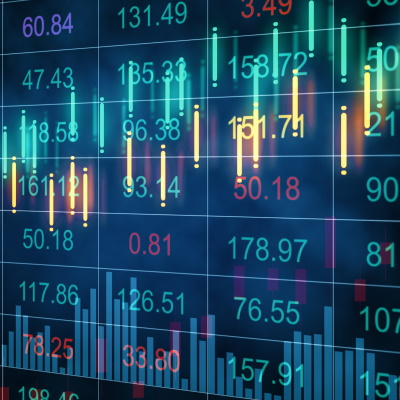Fundamental Analysis of Stocks Vs. Forex

Fundamental Analysis – the Fundamentals
Fundamental analysis is one of the two principal methods used by traders to evaluate the intrinsic value of an asset and forecast its direction based on how undervalued or overvalued it is.
For fundamental analysts, the price of an asset doesn’t always reflect all the available information, which means that actual prices and values may be different.
The other methodology used to analyse the market is known as technical analysis. This method ignores fundamentals and instead focuses on the evolution of the price itself, historical trends, and significant technical levels.
Fundamental Analysis of Stocks vs. Fundamental Analysis in Forex
 Fundamental analysis of stocks focuses on the earnings, revenues, profit margins, growth forecasts, and other important data and ratios of companies and the business sectors they operate in.
Fundamental analysis of stocks focuses on the earnings, revenues, profit margins, growth forecasts, and other important data and ratios of companies and the business sectors they operate in.
This type of analysis aims to identify trends and stock values to help decide whether to buy or sell them. Ultimately, it involves determining if the current price of a company’s share is lower or higher than its fair market value.
Fundamental analysis used by Forex traders, on the other hand, is somewhat different from that used in stock trading, although many parallels can be found. Although a currency pair’s price may also differ from its fair value, which can trigger trading opportunities, fundamental Forex analysis focuses on the overall health of a given economy to determine how well the related currency will perform against currencies from other economies.
There are several fundamental factors in the FX market that can help traders determine the intrinsic value of a currency. These include how currencies react to macro-economic events, relevant central bank monetary policies, socio-political news from each currency’s country of origin, and other significant news or statistics.
In the case of a common regional currency such as the Euro, economic analysis of each member state, as well as the whole regional economy must be analysed to properly evaluate the currency.
The Economic Calendar as a Fundamental Forex Tool
 One of the most useful tools for effectively applying fundamental analysis in your Forex trading is the economic calendar. This tool tracks all financial and economic events related to a currency by date.
One of the most useful tools for effectively applying fundamental analysis in your Forex trading is the economic calendar. This tool tracks all financial and economic events related to a currency by date.
Currency pairs often react sharply to data releases and current news events. The ability to therefore correctly interpret the significance of these events and in what direction the market is likely to move as a result of the outcome is important in predicting future Forex rate movements.
Central Bank Decisions Play a Major Role in the way Currencies Evolve
Some of the most important economic events watched by currency traders include any important decisions made by central banks. After all, central banks are the most influential actors in the currency market, as they decide how the monetary policy of a country evolves. These decisions can then impact the cost and the amount of money available in a given economy.
Will interest rates go up? Will quantitative easing programs be implemented? Will the reserve requirements change? What reports will the central bank make regarding the evolution of an economy?
Forex traders should always have these questions in mind, as any changes in the monetary policy of a country will strongly impact its currency.
Many of the world’s central banks hold a monthly meeting to decide the interest rates of their respective nations. The decision is often accompanied by a statement on monetary policy and a press conference with bank officials. This often triggers high volatility.
To adjust their monetary policies according to their objectives (i.e. to maintain inflation at around a certain level – like 2% in the U.S. and in the Euro Zone), central banks often analyse many economic statistics.
Key Economic Events to Follow
- Gross Domestic Product – the total monetary value of a nation’s goods and services are a gauge of a nation’s economic health. This directly influences the value of its currency. The announcement of a country’s GDP is therefore extremely important in the Forex market.
- Employment – yet another measure of the health of a nation’s economy. Employment numbers can have a considerable impact on the exchange rate of a currency versus other currencies. Among the most important ones are unemployment and participation rates, the evolution of wages, and the NFP report in the U.S.
- Trade Balance – the difference between imports and exports carries considerable weight in the valuation of a nation’s currency and generally favours surpluses.
- Political Situations, Budgetary Concerns – the political situation and the spending habits of a nation’s government can also significantly influence exchange rates, as it can help support growth.
A number of other economic indicators are routinely scrutinised by fundamental traders to determine the future direction of exchange rates, such as manufacturing productivity, PMI (Purchasing Managers’ Index) data, consumer and business confidence, and retail sales numbers.
News Trading – A Fundamental Technique Used to Trade the FX Market
One of the most popular fundamental trading strategies is news trading. This involves solely trading around news releases.
Traders will open and close positions before or after a live news announcement. This will depend on how strong their directional bias is, and they will then use any market volatility to make quick profits.
This type of short-term trading relies on the volatility caused by major differences between the actual reading and the analysts’ forecast. It is also important to consider the actual reading compared to the previous one, as any situations or events that improve or worsen can have a significant impact on the market.





